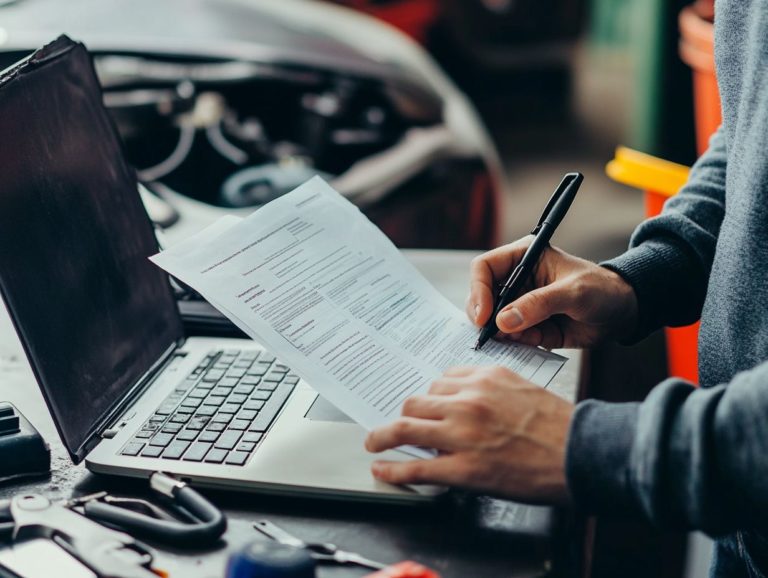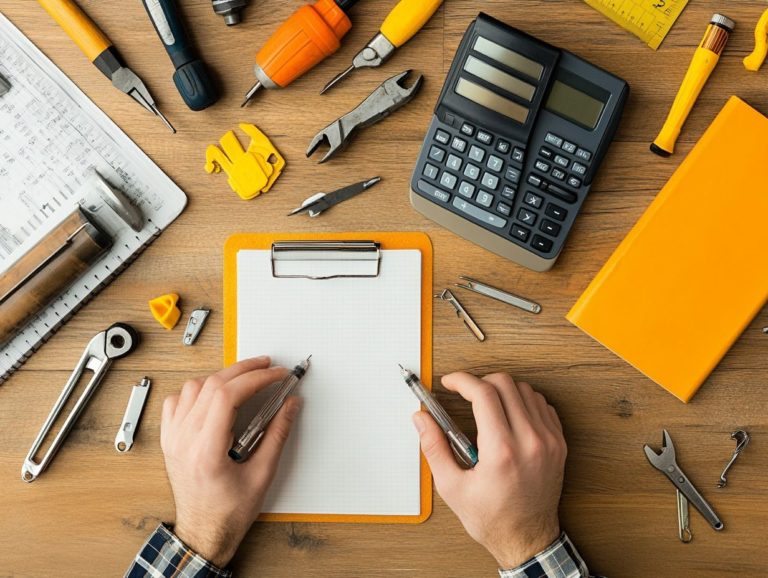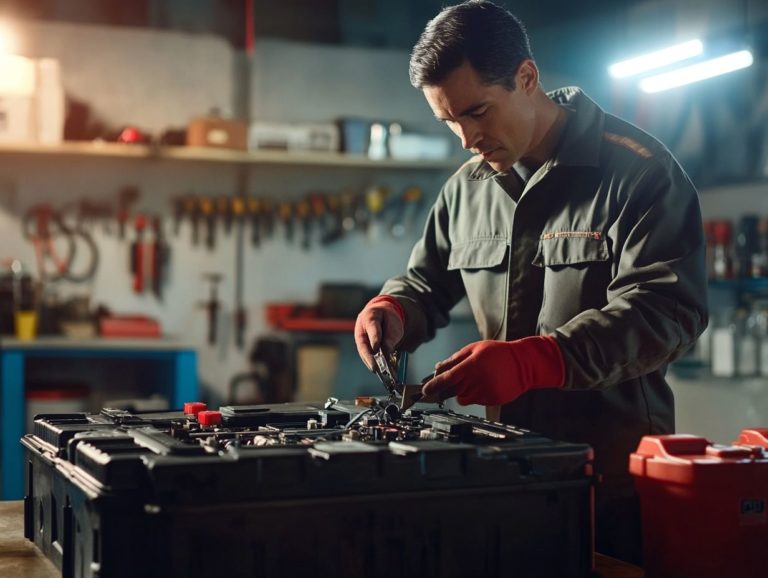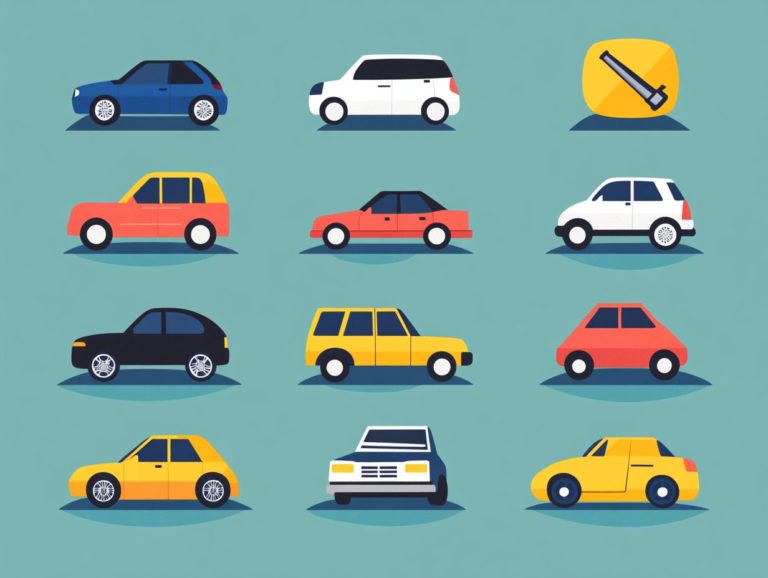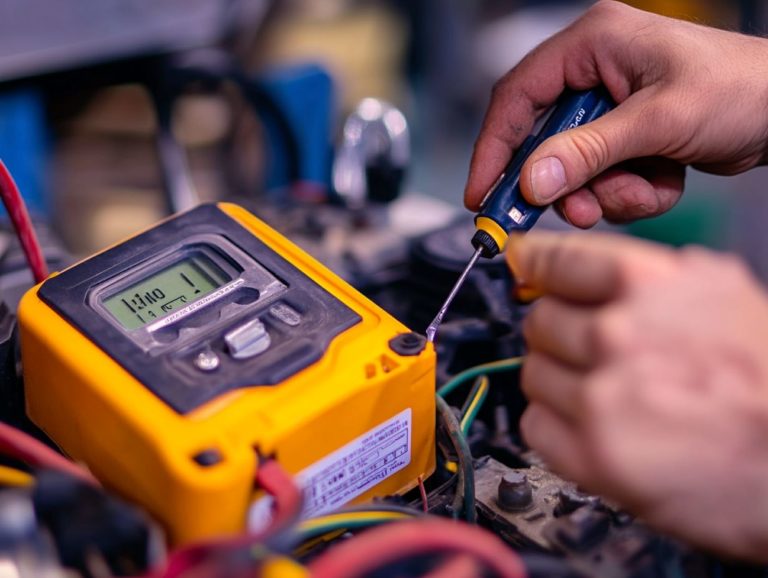How to Check Your Car’s Brake Pads
Brake pads play a crucial role in your vehicle’s braking system, ensuring both safety and performance as you navigate the roads. Understanding how they function and recognizing when they require attention can save you from costly repairs and elevate your overall driving experience.
In this guide, you ll discover the key signs that suggest your brake pads may need a closer look. You’ll also find a step-by-step approach to inspecting them and valuable tips for maintaining their longevity.
By staying informed, you can ensure your brakes remain in peak condition, keeping you safe on every journey.
Contents
- Key Takeaways:
- What are Brake Pads and Why are They Important?
- Signs that Your Brake Pads Need to be Checked
- How to Check Your Brake Pads
- Step-by-Step Guide
- Replacing Worn Brake Pads
- Maintaining Your Brake Pads
- Frequently Asked Questions
- 1. How do I know when it’s time to check my car’s brake pads?
- 2. Can I check my car’s brake pads myself?
- 3. How often should I check my car’s brake pads?
- 4. What am I looking for when checking my car’s brake pads?
- 5. Can I just replace one brake pad or do I need to replace all of them?
- 6. How long do brake pads typically last?
Key Takeaways:
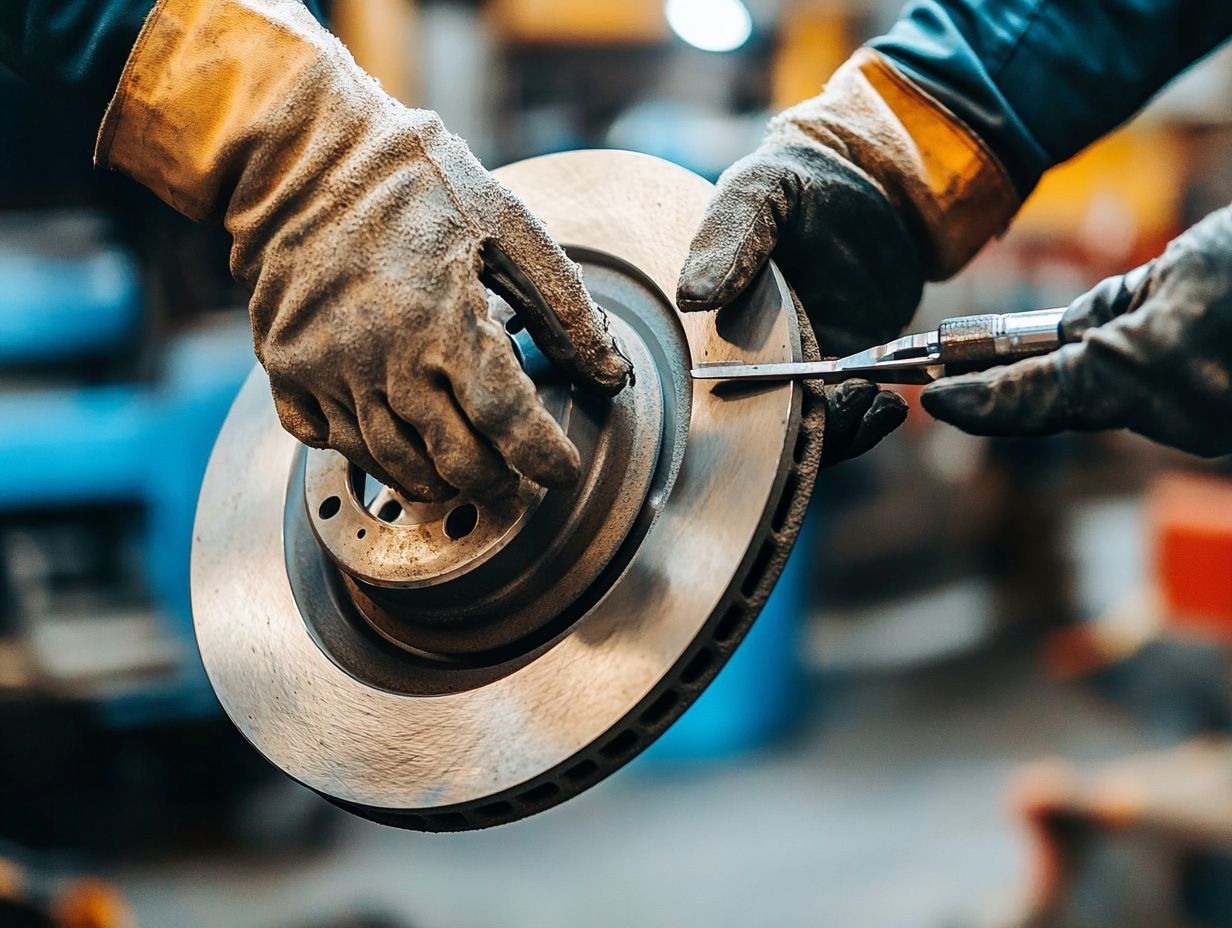
- Regularly checking your car’s brake pads is crucial for your safety and the longevity of your car’s braking system.
- Some common warning signs that your brake pads need to be checked include squeaking noises, vibrations, and a longer stopping distance.
- Following a step-by-step guide and replacing worn brake pads when necessary can help ensure optimal performance and prevent costly repairs in the future.
What are Brake Pads and Why are They Important?
Brake pads are vital elements of your car’s braking system, situated between the brake pedal and the rotor. They play a critical role in ensuring that you can stop safely and effectively.
The rotor is a disc that the brake pads grip to stop the car, while the caliper holds the brake pads. When you press the brake pedal, the brake pads firmly grip the caliper rotor, creating the friction needed to decelerate or halt your vehicle.
Understanding the functionality and significance of brake pads is essential for maintaining your vehicle’s safety and performance. After all, they have a direct influence on braking efficiency and your overall driving experience.
Signs that Your Brake Pads Need to be Checked
Recognizing the signs that your brake pads require inspection is vital for ensuring your vehicle’s safety and optimal performance. Be alert to common indicators such as:
- Unusual brake noises like grinding or squeaking
- Vibrations that resonate through the brake pedal
- The ominous appearance of a warning light on your dashboard
Regularly inspecting your brake pads is essential to guarantee they function correctly. This helps you avoid expensive brake repairs down the line.
Common Warning Signs
Several common warning signs indicate your brake pads might be worn and in need of immediate attention. Pay close attention to noticeable brake noises, like squeaking or grinding. These sounds often signal that your pads are nearing the end of their life.
You might also feel vibrations in the brake pedal when you apply pressure, which shouldn’t be ignored. When you hear those squeaks, remember that they usually come from a small metal tab designed to alert you to the risk of brake failure.
Grinding noises? That s a serious red flag indicating that your pads have worn down completely, leading to metal-on-metal contact that can damage your rotors. If you’re feeling vibrations in the brake pedal, it could mean uneven wear or possible rotor damage, both of which can significantly compromise your braking performance.
If you notice any of these signs, act quickly and consult a mechanic! Regular vehicle maintenance is essential not only for your safety but also to prevent costly repairs in the future.
How to Check Your Brake Pads
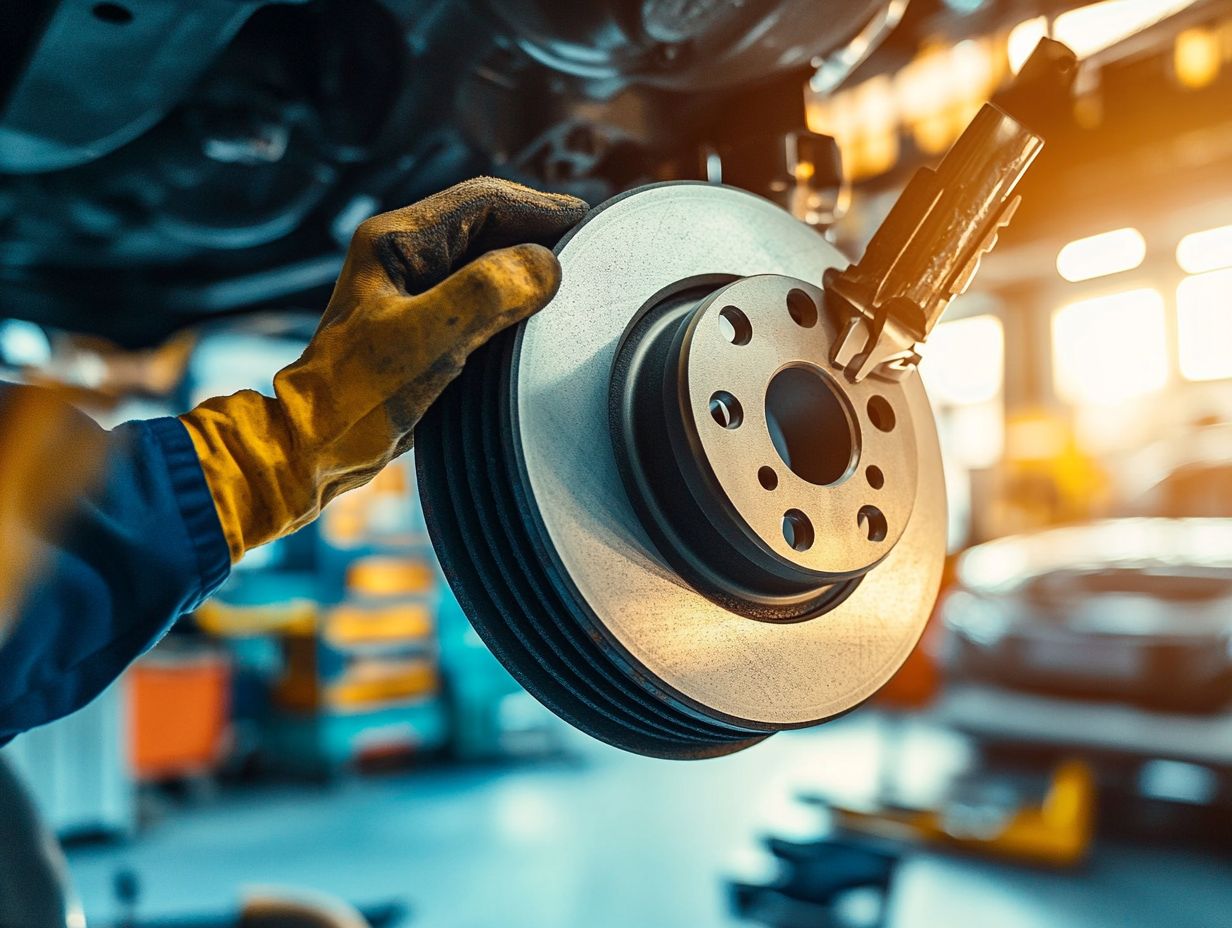
Regularly checking your brake pads is an essential part of vehicle maintenance that guarantees your braking system functions optimally.
To inspect your brake pads, begin by safely lifting the vehicle and removing the wheel to gain access to the brake assembly. Use a caliper or gauge to measure the thickness of the brake pads, taking note of the minimum required thickness for safe operation.
Also, check for any wear or damage visually. This proactive approach will help ensure your safety on the road.
Don t wait check your brake pads today to ensure your safety on the road!
Step-by-Step Guide
Following a step-by-step guide for checking your brake pads is a smart way to ensure they function properly and extend their lifespan. For detailed instructions, see how to keep your car’s brakes in check. Begin by securing your vehicle on a flat surface. Then, remove the wheel to gain access to the brake assembly.
Take a moment to visually inspect the brake pads for signs of wear. Additionally, you should know how to inspect your brake fluid levels as this can also help in assessing overall brake health. Measure their thickness, and check for any damage or excessive brake dust buildup.
Using a reliable brake pad thickness gauge can significantly improve your accuracy. If the thickness reads 1/8 inch or less, it s usually time for a replacement. Don t overlook the brake rotor, which is the part that helps your car stop; checking for uneven wear or scoring is crucial, as these issues can impact your overall braking performance.
Always remember to wear safety glasses and gloves during your inspection to protect yourself from any debris. If you notice any irregular wear patterns or hear strange noises while braking, consult a brake technician. Their expertise will provide a thorough assessment and recommend necessary repairs, ensuring your safety remains a top priority.
Replacing Worn Brake Pads
Replacing worn brake pads is an essential maintenance task that guarantees your vehicle’s braking system remains effective and safe. When you notice that the brake pad thickness has dipped below the recommended level, or if you hear any noticeable brake noise or experience reduced stopping power, schedule an appointment for a brake pad replacement.
Regularly replacing brake pads not only helps you avoid more extensive repairs down the line but also extends the overall lifespan of your braking system.
When to Replace and How to Do It
Knowing when to replace your brake pads is essential for maintaining optimal brake performance and ensuring your safety on the road. A solid rule of thumb is to replace them when they reach a thickness of 3mm or less.
However, keep in mind that factors like driving conditions and your personal driving habits can influence this timeline. Understanding how to replace worn brake pads gives you the power to take charge of this crucial brake service safely.
Look out for key indicators that signal the need for a replacement, such as squeaking or grinding noises, reduced responsiveness, and any vibrations when you brake.
When you re ready for the replacement process, gather a few essential tools like a jack, lug wrench, and brake grease. Proper techniques, such as ensuring your vehicle is securely lifted and using the correct torque for the wheel bolts, are vital for a successful procedure.
When selecting new brake pads, consider factors such as the right materials that work well with your car and performance ratings to ensure you find the right fit for your vehicle. If you encounter any uncertainty during this process, don t hesitate to seek help from a qualified brake technician.
Not only does this ensure your safety, but it also provides expert guidance tailored to your unique driving needs.
Maintaining Your Brake Pads
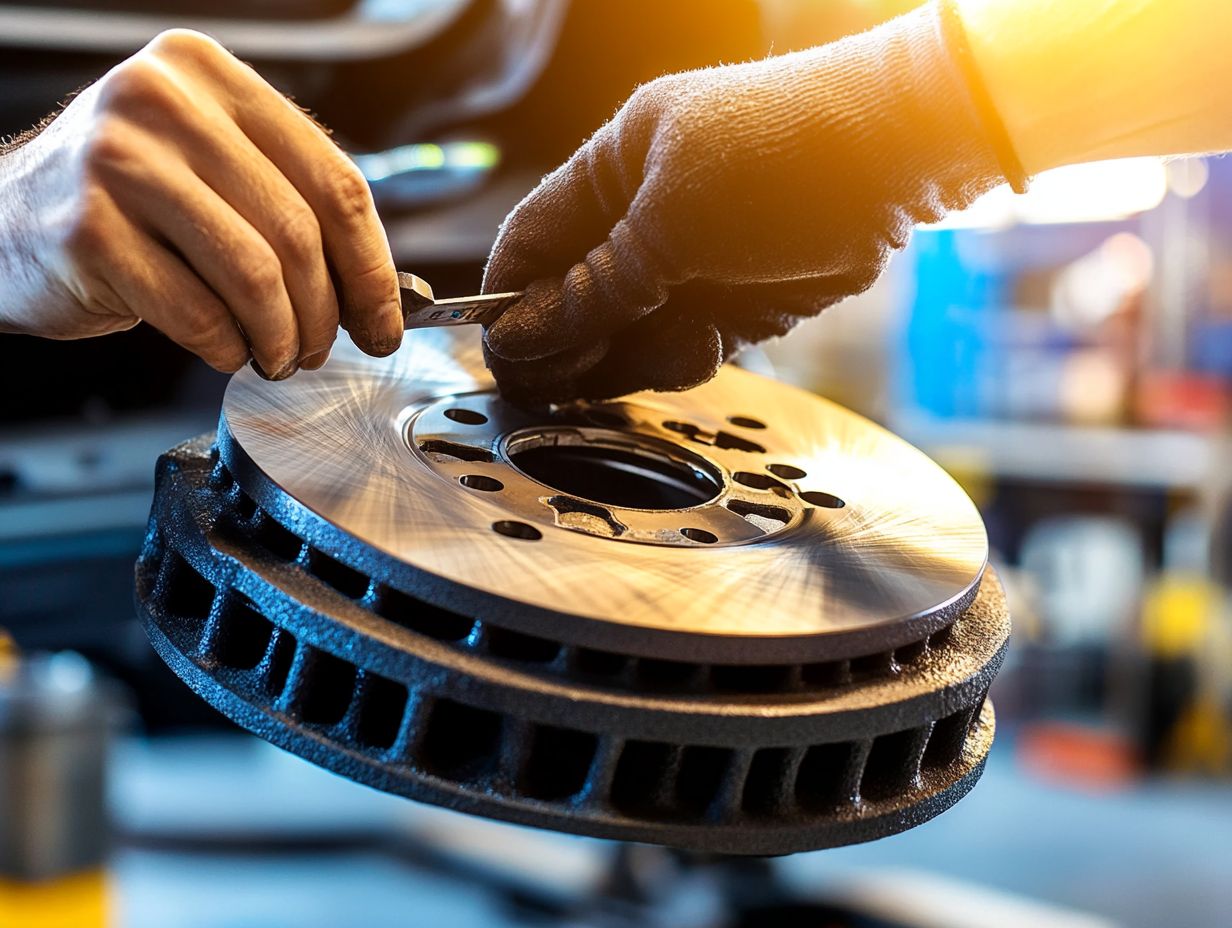
Maintaining your brake pads is crucial, not just for ensuring optimal braking performance, but also for extending their lifespan.
Avoiding expensive repairs down the line is another important benefit of regular maintenance. Regular brake care requires you to monitor brake fluid levels and look for any signs of wear or damage during your routine vehicle maintenance.
By adopting effective brake monitoring techniques, you ll enhance overall brake functionality and safety, giving you peace of mind on the road.
Tips for Extending the Lifespan of Your Brake Pads
To extend the lifespan of your brake pads, consider integrating a few simple yet effective brake care tips into your routine. Regularly monitoring your braking system, being mindful of your driving habits, and taking necessary precautions can significantly reduce wear and tear.
Incorporate smooth driving techniques think gradual acceleration and gentle braking to enhance their longevity. Make it a habit to clean your brake components frequently to prevent the buildup of brake dust and grime, which can compromise performance.
Don’t overlook warning signs, such as unusual noises or a vibrating brake pedal, as these could indicate underlying issues that require immediate attention. Act now to protect your safety!
By adopting these habits, you can optimize brake performance and ensure safer driving experiences for yourself and everyone else on the road.
Importance of Regularly Checking and Maintaining Brake Pads
Regularly checking and maintaining your brake pads is essential for ensuring your vehicle’s safety and optimal braking performance.
Neglecting this vital aspect of car maintenance can lead to serious brake issues, including diminished stopping power and potential brake failure. Don t put yourself in danger keep your brake pads in check!
For most drivers, it s advisable to have brake inspections at least once a year. If you frequently navigate heavy traffic or tackle rough terrains, consider scheduling those check-ups even more often. Experts stress that timely inspections help catch worn parts early, allowing for necessary adjustments or replacements before major damage occurs.
Ignoring this critical maintenance can escalate your repair costs and jeopardize your personal safety. Being aware of the symptoms of brake issues, such as squeaking sounds or a soft brake pedal, can motivate you to engage in proactive discussions with your mechanic. This ensures a safer driving experience for you and everyone else on the road.
Frequently Asked Questions
1. How do I know when it’s time to check my car’s brake pads?
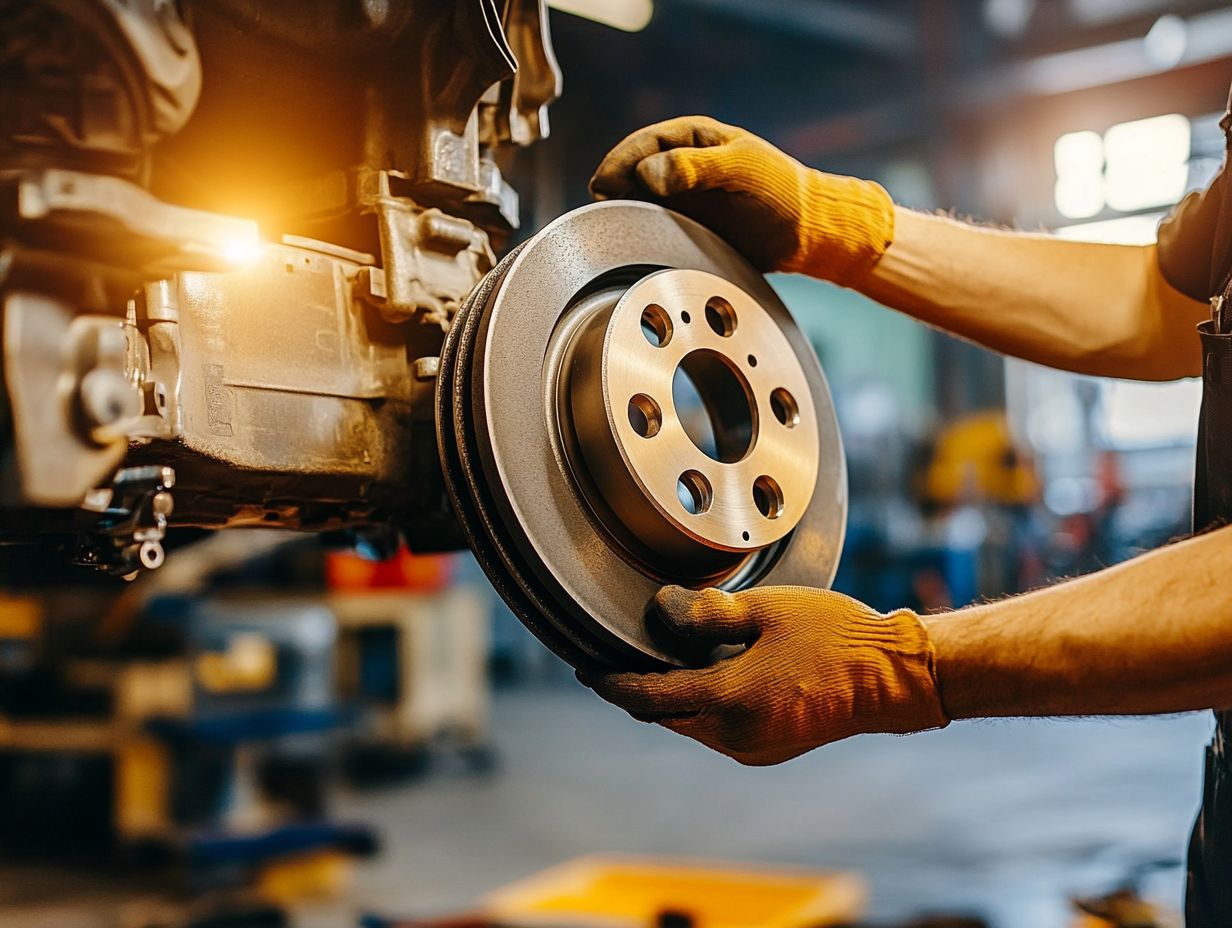
The best way to determine if your car’s brake pads need to be checked is to pay attention to any changes in your vehicle’s braking performance. If you notice increased stopping distance, squealing or grinding noises, or a vibrating brake pedal, it’s time to check your brake pads. If you notice these signs, don’t wait! Schedule a brake inspection today!
2. Can I check my car’s brake pads myself?
Yes, you can check your car’s brake pads yourself. All you need is a jack, lug nut wrench, and a flashlight. However, if you’re not comfortable doing it on your own, it’s best to take your car to a mechanic for a professional inspection.
3. How often should I check my car’s brake pads?
We recommend checking your car’s brake pads at least every 6 months or every 10,000 miles, whichever comes first. If you frequently drive in stop-and-go traffic or in mountainous areas, you may need to check them more often.
4. What am I looking for when checking my car’s brake pads?
You’re looking for the thickness of the brake pad. Generally, if the pad is less than 1/4 inch thick, it’s time to replace it. You should also check for any uneven wear, cracks, or signs of damage.
5. Can I just replace one brake pad or do I need to replace all of them?
It’s recommended to replace all of your car’s brake pads at the same time. This ensures even wear and optimal braking performance. However, if only one pad is significantly worn, you may be able to replace just that one. Consult with a mechanic for their professional recommendation.
6. How long do brake pads typically last?
The lifespan of brake pads can vary depending on the make and model of your car, as well as your driving habits. On average, brake pads can last anywhere from 30,000 to 70,000 miles. It’s important to regularly check them to ensure they are in good condition.

